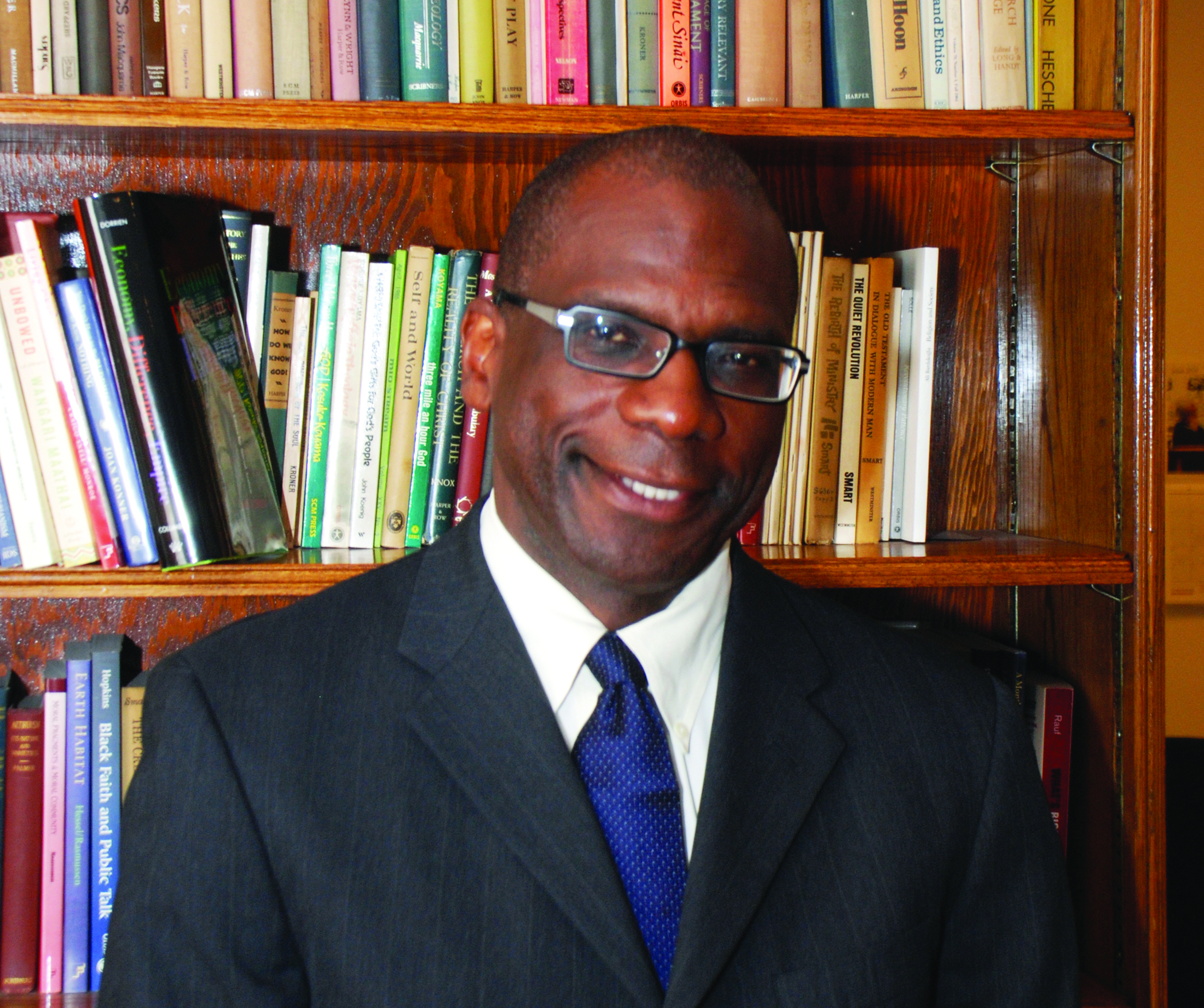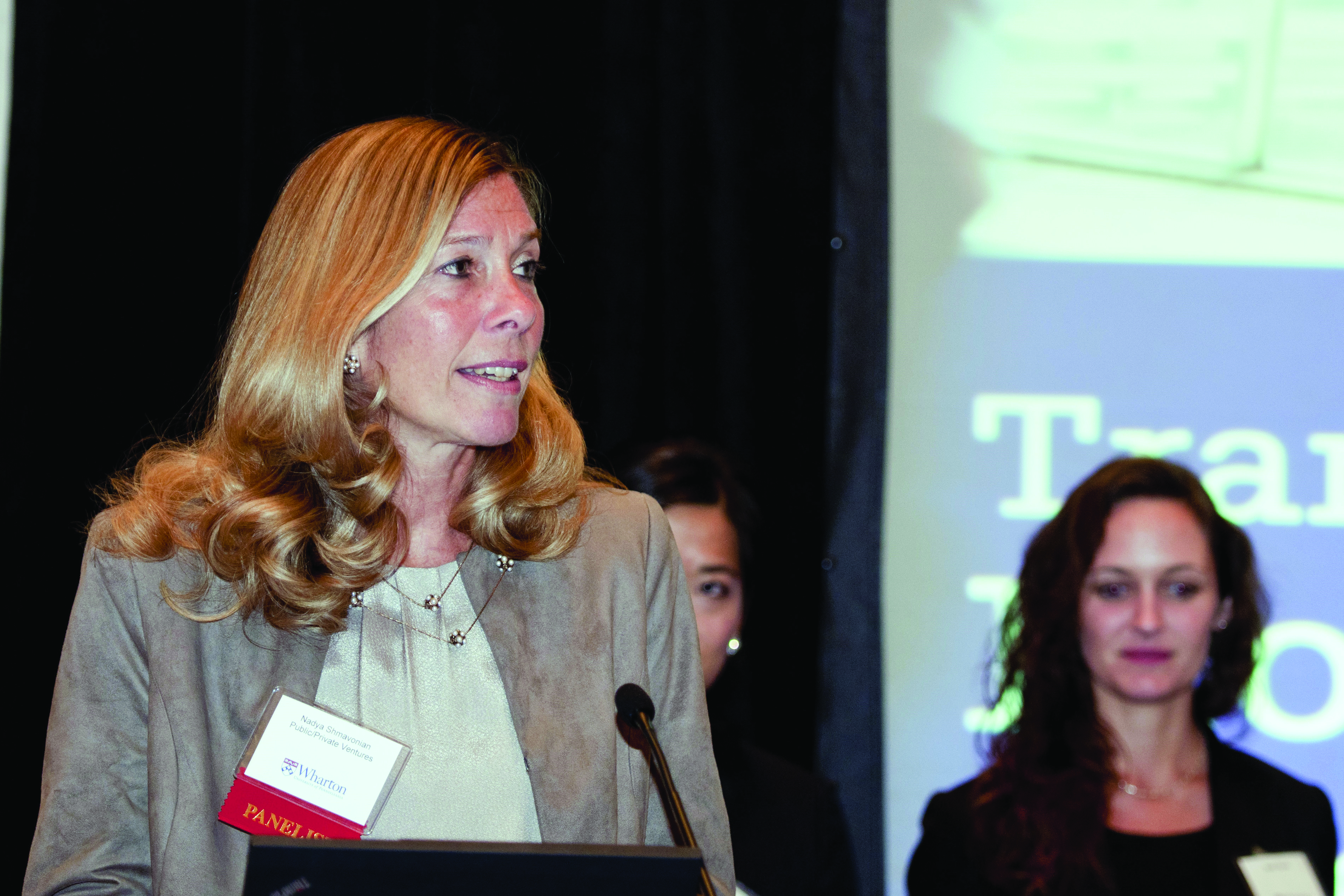During the course of its 35 years, Public/Private Ventures — a well-regarded nonprofit that combined practice and research to learn the best ways to serve youth from high-poverty communities — taught its share of valuable lessons.
But in its last weeks of existence, one of the Philadelphia-based organization’s final reports, titled “Building Stronger Nonprofits Through Better Financial Management,” offered several lessons that were applicable to the organization itself.
The agency issued the report full of advice on how nonprofits can survive just weeks before it closed its own doors, shut down its website and turned off its phones in late July.
Now, its many publications, or at least the titles, are archived at Foundation Center and searchable by the agency’s name.
Former insiders saying the organization’s practices were to blame for the organization’s demise, while the organization itself blames the economic downturn.
Regardless of which explanation deserves the most merit, the organization’s departure has left former executives, ex-employees and others in the youth-work field speculating about whether anything could have been done differently to keep the organization afloat.
Irv Katz, president and CEO of the National Human Services Assembly, a Washington, D.C.-based association of nonprofits that work in human services and related fields, is among those who wonder if things could have been done differently to salvage P/PV.
He called P/PV a “go-to resource for evidence about the effectiveness of social strategies.”
Katz said while he had no direct knowledge of the circumstances that led to P/PV’s closure, he was not completely surprised, either.
Need to adapt
“These are very tough times for many nonprofit organizations, perhaps more so for a think tank like P/PV which did not have a strong self-generating revenue base and that relied primarily on grants,” Katz said. “I can’t help but think, though, that if we were more creative in the sector, more of the spirit and assets of P/PV could have found new homes.”
While Katz stressed the need for more creativity in a general sense, a former P/PV executive directed similar criticism at P/PV itself, telling Youth Today in a recent interview that one of the things that he believed contributed to P/PV’s downfall was internal resistance to trying new things in order to expand the organization’s scope, its reach and, ultimately, its relevance and viability in a changing field.
“I just don’t know that P/PV was engaged in a process that took serious the need to change the business proposition,” said Frederick Davie (picture left), who served as P/PV president from 2007 to 2009. “And so it led some to wonder if that was not at the root of some of the difficulties with continuing to attract donors.”
the need to change the business proposition,” said Frederick Davie (picture left), who served as P/PV president from 2007 to 2009. “And so it led some to wonder if that was not at the root of some of the difficulties with continuing to attract donors.”
P/PV once trailblazing entity
That wasn’t always the case.
With a sizeable staff of 80 in recent years, assets that surpassed $41 million in 2004 during the apex of its revenue stream and an enviable portfolio of work that included research projects that transformed mentoring and other areas of youth work, P/PV had built a reputation as a trailblazing entity that took the field to new heights.
“P/PV led the pack and set a high bar for the many other organizations that would come to follow,” said T. Charles Pierson, president and CEO of Big Brothers Big Sisters of America, the well-known national mentoring agency whose programs P/PV studied beginning in 1995 to produce several groundbreaking reports on effective practices in mentoring.
But in its final few years, the once high-flying P/PV was focused on staying afloat. The total expenses at P/PV in 2009 were $14.2 million. Meanwhile, the organization only brought in $10 million that year, running a deficit of about $4 million and leading the organization to tap into its endowment. (See February 2010 Youth Today’s “In Tough Times, an Endowment Gets the Save: P/PV cuts staff, but Ford’s gift provides stability.”)
During the past decade, the organization typically garnered 15 to 20 grants per year, tax returns show, except in 2007 and 2008, when it obtained 34 and 26 grants, respectively.
But whatever the total number of grants in a given year, collectively the grants were decreasing in size.
One of P/PV’s most sizable grants was a $2.8 million, two-year grant in 2007 from Atlantic Philanthropies, of New York, to provide technical assistance and management support to New Mexico and other potential Integrated Services in Schools sites.
But Atlantic Philanthropies was never a frequent donor.
That distinction belonged to several other organizations, not the least of which was the Ford Foundation, which helped P/PV with a $4 million endowment and a $3.5 million venture fund for new projects in 1997.
Since 2003, P/PV could count on Ford to contribute about half a million or so dollars each year for various projects, ranging from illuminating effective employment strategies to working with “marginalized men” on avoiding “premature formation of families.”
Ford made no grants to P/PV in 2010 or 2011, but in 2012 it gave P/PV $450,000 for “general support to help organizations improve their effectiveness in helping young people in high-poverty communities transition successfully to adulthood,” according to a description on The Foundation Center’s website.
Many of PP/V’s grants were six-figure grants that came from two longstanding grantors – Maryland-based The Annie E. Casey Foundation and Michigan-based Charles Stewart Mott Foundation – which gave P/PV 36 and 31 grants, respectively, from 2003 through 2012.
Casey turned to P/PV for projects that ranged from training adults to talk more effectively with young people about reducing sexual risk-taking, to support for the Amachi Training Institute, a national faith-based mentoring model for children of incarcerated parents that was developed by former Philadelphia Mayor W. Wilson Goode, Sr., formerly a Senior Advisor on Faith-Based Initiatives at P/PV.
Mott turned to P/PV for projects that included mining labor market data for its Pathways Out of Poverty program and evaluating similar employment initiatives throughout the country.
Mott funded P/PV in good times and bad. For instance, it was Mott that gave P/PV a $150,000 grant for use back in June 2011 to help shut down, a process that included the transfer of intellectual property to third parties, completing or transferring existing projects, and retaining legal and accounting support to dissolve the organization.
Finances foretold closure
“P/PV had been struggling financially for some time, and as early as January 2011 we began calculating what it would cost to close responsibly, with the sincere hope that this eventuality would never come to pass,” Nadya Shmavonian (pictured right), the last P/PV president, said in a written statement she provided in response to a series of questions posed by Youth Today.
January 2011 we began calculating what it would cost to close responsibly, with the sincere hope that this eventuality would never come to pass,” Nadya Shmavonian (pictured right), the last P/PV president, said in a written statement she provided in response to a series of questions posed by Youth Today.
“Based in part on these calculations, we took severe measures to rein in costs, including renegotiating office leases and laying off almost half our staff,” Shmavonian said. “Unfortunately, even after these painful cuts, within a year it was clear that we would not be able to raise the funds needed to keep us from dipping below the balance we knew we’d need to have on hand to wind down responsibly.”
That level, she said, was in the $2 million to $2.5 million range.
It’s a stunningly low floor for an organization whose total assets had reached a record high of $41.2 million in 2004.
But the organization’s assets had been falling precipitously ever since, dropping to $36.3 million in 2005; $29.6 million in 2006; $28.1 million in 2007; $21.2 million in 2008; $14.6 million in 2009; and $11.5 in 2010.
The fall in revenue was linked to a decline in giving – or at least in getting.
The year 2004 was a record year at P/PV for gifts, grants and contributions, which stood at $19.7 million that year, tax returns show. But gifts, grants and contributions fell to $9.2 million in 2007, inching back up – relatively insignificantly – to $10 million during the recession year of 2009.
Ex-president sought change
During his tenure at P/PV, Davie said he tried to initiate a number of changes that he thought would make P/PV more viable.
“I thought that there were opportunities for P/PV in areas where we were not currently working or where we could do more work, such as prisoner reentry work,” Davie said. “That did not meet with the kind of reception that I wish it would have. I think that not doing more work in that realm was a missed opportunity.
“Then there was internal discussion about some of the other possibilities, but there wasn’t much traction.”
Davie said he also tried to persuade the board of directors to adopt a “give-or-get” policy, an increasingly popular practice wherein board members are expected to contribute or raise money for the organization.
One consultant downplayed the difference that a “give-or-get” policy would have made. “No single funding strategy is ever going to be the magic bullet that saves an organization from financial disaster,” said Ellen Bristol, president of Bristol Strategy Group, a consulting firm that assists nonprofits with fundraising.
“For one thing, most boards need to ease into such policies, starting by pledging small amounts, like $500,” Bristol said. “For a typical sized board of 13 to 15 persons, we’re talking a maximum $7,500, a welcome sum but just a drop in the bucket for an organization that runs a $10 million-plus annual budget.”
Bristol also said since the president is an employee of the board, give-or-get policies should be the board’s idea, “or at least the board has to embrace the idea before it will work at all.”
Trims made at the top
Any time an organization starts to go under, an examination of payroll is bound to follow.
Shmavonian is credited with making P/PV less top heavy when she took over the reigns of the organization in 2009 as its troubles were becoming more acute.
“If you went to their website in 2008 and looked at their directory, everyone was a VP of something,” said Jeffrey A. Butts, former vice president of research at P/PV who was let go from P/PV in December 2009 as Shmavonian prepared to take over in January 2010.
“They had a lot of admirals and generals and not too many privates and sergeants,” Butts said. “When [Shmavonian] came in, she immediately tried to turn that pyramid upside down and get rid of some of the admirals and generals to spend the money on privates and sergeants.
“I was one of those generals she decided she didn’t need. She hadn’t even started the job and decided my position was no longer tenable.
“Theoretically, I agreed she needed to get rid of generals, but the way she made the decision was tenure and loyalty and length of service, as opposed to capacity to generate new business, leadership, experience and so forth,” said Butts, who was released from P/PV after just one year at the organization. He subsequently became director of the Research and Evaluation Center at the John Jay College of Criminal Justice at CUNY, where he remains to this day.
The layoffs left P/PV underpowered in terms of development, Butts said.
“She deskilled the organization too heavily in the ranks for people who could do project development and left herself with middle managers and lower-level workers,” Butts said.
Shmavonian conceded that the layoffs involved difficult decisions.
“In all of our staff cuts we tried to balance the need to make meaningful salary reductions with the desire to retain essential skills,” Shmavonian said. “All of this was part of the difficult calculus of whether we could survive sustainably and ultimately contributed to our sense that it was not possible.”
Time spent on survival
In order to gain more insight into industry lessons from the demise of P/PV, Youth Today – along with Bristol, the nonprofit fundraising consultant – did a review of several recent tax returns for P/PV.
In some ways, the review raised more questions than answers.
“What I always wonder about when viewing 990s is how large a proportion of executive time has been allocated to fundraising,” Bristol said, referring to the publicly available tax returns that nonprofits must file with the IRS. “If the agency went down because they couldn’t maintain sustainable funding streams, the problem more often lies in weaknesses in the fund development function and processes.”
Based on revelations Shmavonian made to Youth Today, Bristol’s analysis was on-point. For instance, when asked whether P/PV was able to hustle up new business by paying visits to Capitol Hill, Shmavonian said: “While we weren’t engaged in ‘lobbying’ as it is generally defined, we have a long history of meeting with policymakers to share lessons from our work and to help us develop a research agenda that responds to important policy concerns.
“Unfortunately, with the press of organizational challenges that we faced in 2010 and 2011, we did not keep these visits going,” Shmavonian said. “In late 2011 and early 2012, I reinstated monthly visits with policymakers in D.C. to stay abreast of federal funding trends and opportunities.
“Unfortunately, we ran out of time to benefit from these efforts.”
Youth Todayalso asked Shmavonian to provide perspective on executive compensation, which the newspaper described to her as “pretty handsome throughout the recession.”
“Actually, our executive compensation has consistently been below market, and our board used external compensation consultants to benchmark salaries against other national research firms,” Shmavonian said. “It should be noted that our executive staff received no salary increases or bonuses after October 2010, so 2010 was the ceiling on executive compensation.
“Executive staff received less pay in both 2011 and 2012, as we attempted to get the organization onto more stable financial ground.”
Bristol agreed that high salaries are not what did P/PV in.
“Executive compensation may be a factor, but I don’t think it’s necessarily that big a factor,” Bristol said. “Could those salaries have been smaller? Well, sure. I thought the senior execs were making a nice chunk of change,” Bristol said of the executive pay at P/PV.
In 2007, Davie, the former president, was paid more than $255,000 in compensation. Jean Grossman, a senior research fellow, was paid nearly $180,000 for working an average of 23 hours per week, but the figure came down to about $138,000 in 2009 for 37.5 hours a week. About a half-dozen VPs – including Butts — were paid six-figure salaries during the same period, according to the organization’s 990s.
“But how much money would have been re-allocated to programs, if they had all agreed to take a large pay cut?” Bristol asked. “Even if they all cut their salaries in half, the total amount would still have been relatively modest when compared to total budget.”
Partners say a void is left
Some former partners, former employees and supporters mourn P/PV’s departure, saying it leaves a void that will be difficult to fill.
“The closing of P/PV represents a significant loss to our field and many others,” said Pierson, the Big Brothers Big Sisters CEO.
But others don’t see P/PV’s passing as that big of a blow.
Butts, the former VP of Research at P/PV, says P/PV’s absence will not be so profound because the organization was “not the dominant player in one field,” like, say, a Brookings Institution is to tax policy, but was rather a hybrid of service and research — something he said was perceptually problematic in and of itself.
Youth Today attempted to reach several funders for perspective on P/PV’s demise, but they all declined comment or did not return phone calls and e-mails.
P/PV, Butts said, was a “credible coming-off-the-bench player in a lot of areas. But they weren’t Michael Jordan.”
Shmavonian plans to write more extensively this fall about P/PV’s wind-down experience. A hint of what she has to say is contained in a May 10 email titled “82 Days and Counting” that she sent to P/PV staff as the organization headed toward closure.
It addresses the mistaken impression that some collaborators had about the way P/PV planned to shut down. “Most strikingly, we learned that what we’re trying to do may be more unusual than we had imagined,” Shmavonian said. “I realize now that in our initial communication, we didn’t do enough to emphasize our intent to work full throttle through June 30, when the majority of our staff will leave.
“We were surprised to learn that several funders and partners — particularly those in regions where there have been some sudden nonprofit closures — had simply assumed that our work would cease immediately.
“Unfortunately, this is more often than not the way nonprofits (and for profits, I might add) close. We are determined to release a steady stream of final publications and other products through July, even after most staff have left.”
One of its last reports – the one about building a stronger nonprofit – seems to describe the scenario at P/PV in its final years.
The report laments how organizations “often struggle to manage their finances effectively — challenged by the basic, day-to-day demands of paying bills, submitting vouchers and responding to funder requests.”
“In these situations,” the report states, “leadership is forced to focus on survival and crisis management, rather than long-term strategic planning and development.”
Jamaal Abdul-Alim is a Washington, D.C.-based freelance writer who’s work has appeared in The Milwaukee Journal Sentinel.






























